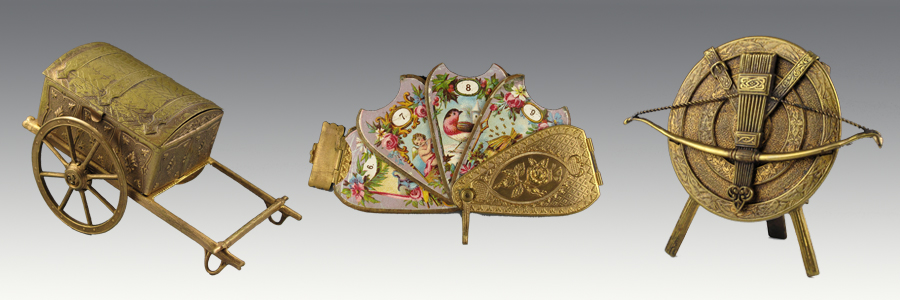Cook, Son & Co - London
History
The retail linen draper business established by William Cook (1784-1869) in London had evolved into a wholesale warehouse by
1819. Cook then partnered with his brother and another man and the firm became known as Cook, Son & Gladstone by
1834. Cook’s second son, Francis (1817-1901), began to work in his father’s firm in 1833 and became a partner in 1843
whereby the company name was changed to Cook & Son. The firm manufactured and distributed silk, linen, woolen
and cotton goods throughout Great Britain and the colonies. When Cook’s eldest son died in 1852, the firm became Cook,
Son & Co. William Cook passed away in 1869 and his son, Francis, became the head of the business in addition to
inheriting a small fortune from his father.
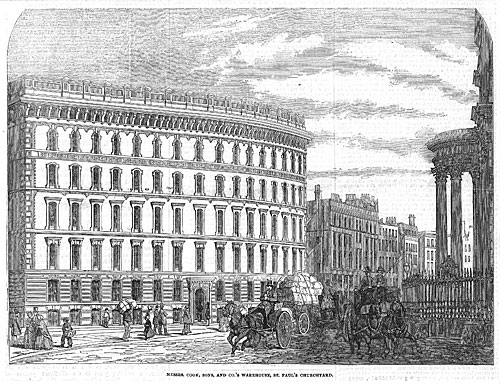
Drawing of the Cook, Son & Co Warehouse at St. Paul's Churchyard in London in 1854
During his tenure with the firm, Francis Cook promoted the idea of employing commercial sales representatives. They
were required to travel by train, via the newly established rail system, to a variety of locations with samples of company
merchandise. The goal was to sell their products to a wide range of businesses and places and as a result become well
known and more profitable. Consequently, the firm developed into more of a warehouse and distribution center than a
manufacturer and became one of the largest English wholesale clothing traders. In 1884 Cook, Son & Co was listed in the
Business Directory of London as warehouseman. At the time that meant “someone who owned a warehouse and sold goods
directly from it or from a shop fronting onto the warehouse”. Although Francis was quite wealthy as a result of his
inheritance and business success, he continued to work each day when he was in London until shortly before his death in
1901. His first marriage in 1841 was to a woman from a wealthy English family that lived in Portugal where he subsequently
built a second home After her death, in 1884, he married a woman, from a wealth family from New York, who was a major
advocate of women’s rights.
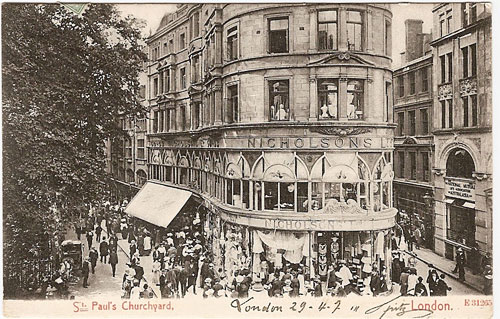
Photograph of part of St. Paul's Churchyard in 1929
In 1864 Francis entered the European nobility when he was made a viscount by the king of Portugal and later in 1886 he became a
baronet in Great Britain. Prior to his death he was considered one of the three richest men in Britain. During
his lifetime Sir Francis Cook amassed a huge collection of art which was considered one of the most important in England at the
time It included works by El Greco, Titian, Van Eck, Durer, Van der Weyden, Rubens, Rembrandt, Gainsborough and Turner,
to mention a few, which were later sold to a variety of major museums throughout the world.

Aerial photograph of the St. Paul's area after the Blitz in 1940
Needle Cases
It seems most likely that Cook, Son & Co entered into a license agreement with W. Avery & Son in 1868-69 so their firm’s
name could be placed on several of the early flat-style needle cases that Avery had patented. Presumably the clients of a
warehouse filled with linens and fabrics would also be in need of needles. Therefore, needle cases most likely filled
with Avery needles and stamped with the Cook’s name were also distributed. One can hardly think of a better way for a
small needle maker like Avery to compete with the other large needle manufacturers from the Redditch area. Although it
is unclear whether Cook or Avery initiated the agreement, it seems likely that it was Avery as he also licensed his early needle
case designs to other warehouse/wholesale companies, lace merchants, drapers and dressing case makers during this time
period. Regardless of who initiated these agreements, Cook wanted his coat of arms, a bent arm with a wreath, displayed
on all of the needle cases that carried the Cook name. These included several versions of the Demi-Quad Helen’s, a
Quadruple Golden Casket and the Golden and Silver Needle Cases. Apparently Avery customized his needle cases to meet
Cook’s requirements. A few years later this included the Royal Needle Case with Vase and the Butterfly Box - Oval
Tub. Likewise in 1877 Cook contracted with Buncher & Haseler to customize a Golden Cart Needle Case that the Birmingham
die-sinker had also licensed to Avery.
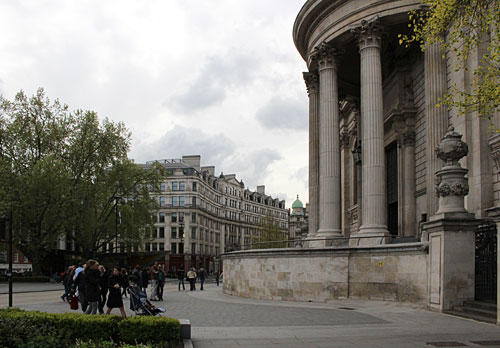
Photograph of St. Paul's Churchyard on the south side of the cathedral in May 2015
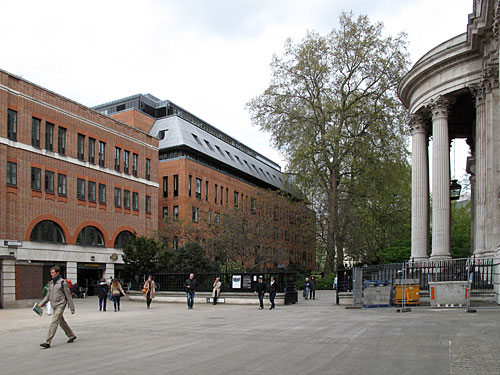
Photograph of St. Paul's Churchyard on the north side of the cathedral in May 2015
Sources:
Baronet definition – Available at Wikipedia in April 2013.
The British Library Business and Intellectual Property Centre, London - Patents:
- #3517 dated Nov. 19, 1868 - Quad - Bent Arm with Wreath patent to William Avery & Albert Fenton, Redditch
- #2998 dated Oct 14, 1869 - Demi-Quad - Helen Bent Arm with Wreath, Demi-Quad - Helen Maltese Cross in Medallion patent to William Avery & Albert Fenton, Redditch
- #58 dated January 7, 1868 - Golden Needle Case and Silver Needle Case patent to William Avery
- #2998 dated Oct. 14, 1869 - Royal Needle Case with Vase patent to William Avery & Albert Fenton, Redditch.
Business Directory of London, 1884, page 143. Available at Google Books.
Cook, Son & Co – Available at Wikipedia in April 2013.
The Draper and Clothier – a Book of General Information, 1860. Available at Google Books.
Francis Cook, 1st Viscount of Monserrate – Available at Wikipedia in April 2013.
The National Archives in Kew, UK – Design Registrations:
- #267191 dated March 16, 1972 (in BT43/31 and BT 44/2) – Butterfly Box – Oval Tub registered to W. Avery & Son, Redditch
- #311822 dated July 11, 1877 (in BT43/42 and BT 44/4) – Golden Cart registered to Buncher & Haseler, Birmingham
Sir Francis Cook – Available at http://jardimformoso.blogspot.com/2009/03/sir-francisc-cook-dnb.html in February 2013.
Viscount definition – Available at Wikipedia in April 2013.
Warehouseman definition – Available at Wikipedia in April 2013.




